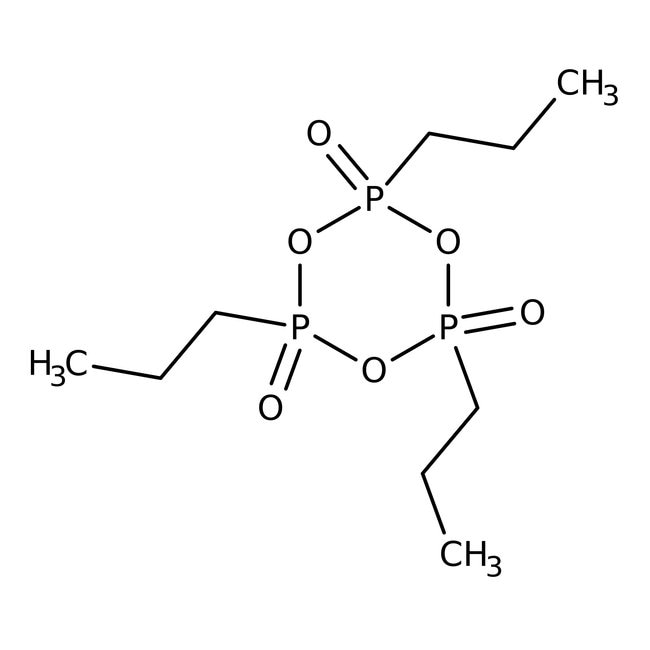Search Thermo Fisher Scientific
1-Propylphosphonic acid cyclic anhydride, 50+% soln. in ethyl acetate, Thermo Scientific Chemicals



1-Propylphosphonic acid cyclic anhydride, 50+% soln. in ethyl acetate, Thermo Scientific Chemicals
Chemical Identifiers
Specifications
Description
This Thermo Scientific Chemicals brand product was originally part of the Alfa Aesar product portfolio. Some documentation and label information may refer to the legacy brand. The original Alfa Aesar product / item code or SKU reference has not changed as a part of the brand transition to Thermo Scientific Chemicals.
1-Propylphosphonic acid cyclic anhydride is used in the synthesis of N-acyloxythiazole-2(3H)-thiones. It is also used to promote the synthesis of hydroxamic acids from carboxylic acids. Further, it is employed as an efficient promoter for the Lossen rearrangement to synthesis urea and carbamate derivatives.
Solubility
Miscible with dichloromethane, dimethyl formamide, dioxane, terahydrofuran, polar and aprotic organic solvents.
Notes
Moisture sensitive. Incompatible withstrong oxidizing agents.
Figures
Documents & Downloads
Certificates
Frequently asked questions (FAQs)
Citations & References
Safety and Handling
Classification of the substance or mixture
CLP classification - Regulation(EC) No 1272/2008
Label Elements
Signal Word
Danger
Hazard Statements
H314 - Causes severe skin burns and eye damage
H336 - May cause drowsiness or dizziness
Physical Hazards
H225 - Highly flammable liquid and vapor
Precautionary Statements
P261 - Avoid breathing dust/fume/gas/mist/vapors/spray
P210 - Keep away from heat, hot surfaces, sparks, open flames and other ignition sources. No smoking
P280 - Wear eye protection/ face protection
P301 + P330 + P331 - IF SWALLOWED: rinse mouth. Do NOT induce vomiting
P305 + P351 + P338 - IF IN EYES: Rinse cautiously with water for several minutes. Remove contact lenses, if present and easy to do. Continue rinsing
P310 - Immediately call a POISON CENTER or doctor/physician